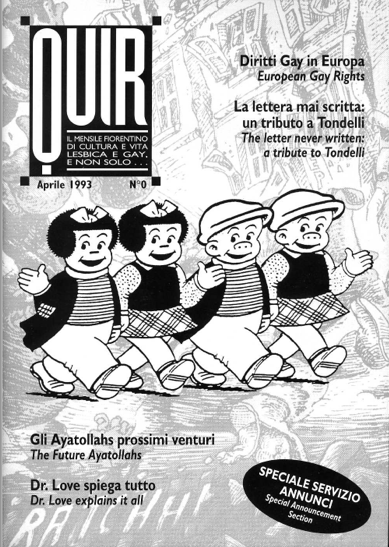by Eva Nossem
This paper aims at examining the reception, (g)localization, and also (re)creation of different forms of “queer” in the Italian context. First, I conduct a semasiological analysis of the diachronic semantic and connotative development of the English-turned-global “queer” in order to provide a detailed insight into its palimpsestic meaning. The offensive qualities of the slur, I argue, provide the aggressive power required for self-definition in queer activism. In a next step, I examine the entry of “queer” into the Italian lexicon from a queer lexicographical and lexicological perspective. Lastly, adopting an onomasiological approach, selected emerging local Italian alternatives to the adopted and adapted English “queers” are presented, specifically frocio and frocia, femminiellə, and ricchione. My analysis focuses on the Italian linguistic and cultural context not as a passive recipient but brings to light its active and productive role in creating (g)localized “queers” by reappropriating and resignifying pre-existing local terms. It shows the interplay between the English and Italian “queers” and their alternatives, outlining their locatedness on a global to local scale, while at the same time unraveling their interconnectedness and their interdependencies.

